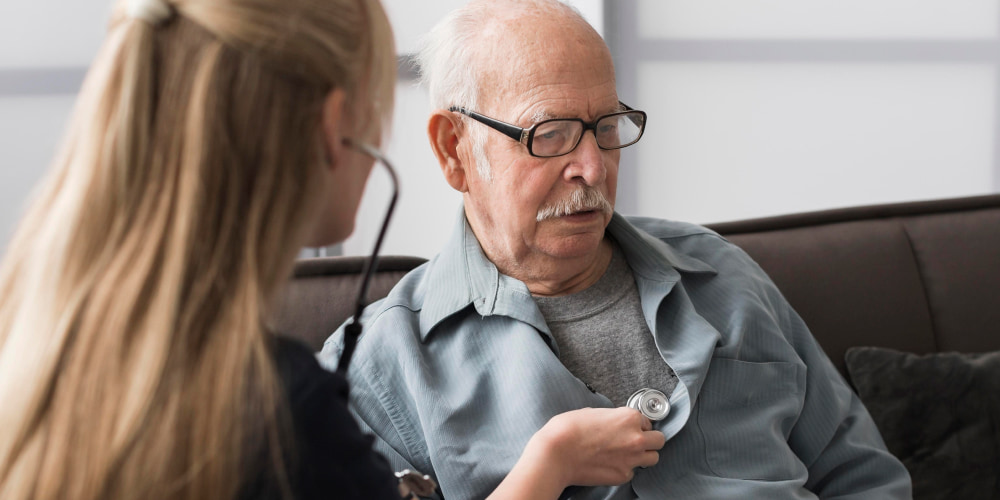A stroke is a medical emergency where every second counts. When it occurs, rapid action is essential to reduce brain damage. This increases the chances of recovery. A stroke happens when blood flow to the brain is blocked or interrupted. It leads to a lack of oxygen and nutrients. The longer the brain is deprived, the more severe the damage. Recognizing stroke symptoms quickly can make all the difference in saving a life.
One effective way to spot it is by using the acronym FAST. It is Face drooping, Arm weakness, Speech difficulty, and Time to call for help. If you notice any of these signs, act immediately and call emergency services. Delaying treatment can lead to irreversible brain injury. It’s crucial to act fast when you notice the first sign. By acting quickly, you give the person the best chance for recovery. It helps them to reduce the potential for lasting damage. Time truly is of the essence in an emergency.
Understanding Stroke Symptoms and Warning Signs
Recognizing the signs of a stroke early is critical for prompt treatment. It also minimizes brain damage. Clinical symptoms can appear suddenly and may vary in severity. This is important to act quickly if any of these signs occur. These include:
- Sudden numbness or weakness: This appears in the face, arm, or leg. Numbness typically affects one side of the body.
- Trouble speaking or understanding speech: Such a sign includes slurred speech. Some individuals face difficulty finding words.
- Vision problems: Sudden loss of vision in one or both eyes. Blurred or double vision also can present.
- Severe headache: This may appear with no known cause. It is often accompanied by dizziness or vomiting.
- Difficulty walking: This may be a sudden loss of balance or coordination.
These stroke warning signs can range from mild to severe. They often appear without warning. Minor symptoms are slight numbness or difficulty speaking. They might be temporary, but even these should never be ignored. Early intervention can significantly improve recovery chances. It’s crucial to understand that a stroke can escalate rapidly. Even seemingly minor symptoms should be treated with urgency.
How to recognize a stroke is essential. If you or someone else experiences any of these signs, don’t wait to see if they improve. Seek medical help immediately. The faster you act, the better the chance of reducing damage and improving recovery outcomes.
The FAST Method: How to Recognize a Stroke Quickly
The FAST method is the most popular. This is a simple and effective way to recognize a stroke quickly. If you notice any of the following symptoms, it’s time to act fast:
- Face drooping: One side of the face may appear uneven or droopy.
- Arm weakness: One arm may feel weak or numb.
- Speech difficulty: Slurred speech or difficulty understanding words.
- Time: Call emergency services immediately.
Quick action can reduce brain damage and improve recovery chances. Don’t hesitate to seek help. Remember, even if symptoms seem mild, how to recognize a stroke is crucial for saving lives.
What to Do During a Stroke: First Aid Steps
You may witness someone having a stroke. If you face such a situation, you must act quickly and appropriately. Follow these steps immediately. Here are stroke first aid steps:
- Call emergency services right away: Time is crucial in treating a stroke.
- Ensure the person is in a safe position: He or she must be in a comfortable position. This is preferably lying down with their head elevated.
- Do not give food or water: This could lead to choking.
- Stay calm and reassure the person: Do this until medical help arrives.
Knowing what to do during a stroke can help prevent further damage. Act quickly and keep the person calm. These steps can improve their chances of a better recovery.
Prevention: Reducing Your Risk of Stroke
Reducing your risk of stroke involves making key lifestyle changes. It’s also vital to manage health conditions effectively. There are several strategies for stroke prevention. Here are key prevention strategies:
- Maintain a healthy diet: Focus on eating nutrient-rich foods. Choose fruits, vegetables, whole grains, and lean proteins. Reducing salt and saturated fat can help lower blood pressure and cholesterol levels. These are major risk factors for stroke.
- Exercise regularly: Aim for at least 150 minutes of moderate exercise each week. Physical activity helps maintain a healthy weight and lowers blood pressure. It also improves circulation. All factors that reduce stroke risk.
- Avoid smoking: Smoking is a major risk factor for stroke. It can damage blood vessels, increase blood pressure, and promote blood clotting. All of which contribute to stroke risk. Quitting smoking significantly lowers your chances of having a stroke.
- Manage hypertension and diabetes: High blood pressure is the leading cause of stroke. This is important to keep it under control. If you have diabetes, maintaining stable blood sugar levels is also essential.
- Regular check-ups: Doctor visits allow for early detection and management of risk factors. They include high cholesterol, hypertension, and heart disease.
Knowing how to recognize a stroke can help you act quickly if it occurs. Being proactive with these lifestyle changes can help prevent a stroke. It also improves overall health.
Time Is Brain: The Importance of Immediate Action
During a stroke, time is brain. It means every minute without medical intervention results in the loss of thousands of cells. This damage can significantly impact short- and long-term recovery. It leads to lasting disabilities or even death. The faster you respond to the signs of a stroke, the better the chances of minimizing brain damage. You also will improve recovery outcomes.
Why is immediate action crucial? Here’s why:
- Brain cells begin to die quickly: Within the first few minutes of a stroke, brain tissue is deprived of oxygen. It leads to irreversible damage.
- Recognizing the stroke symptoms: Use the FAST method. It helps to quickly identify a stroke.
- Every minute counts: For any time that passes without treatment, millions of brain cells die. This can affect speech, movement, and other cognitive functions.
- Quick intervention saves lives: Immediate medical treatment can restore blood flow to the brain. It also reduces damage, and increases the likelihood of a full recovery.
- Act fast stroke: When you notice any of these symptoms, don’t wait. Call emergency services immediately. Early intervention reduces the severity of long-term disabilities. It also improves outcomes for stroke victims.
Remember, every second counts. Contact LoneStarNeurology to get high quality help.













Please, leave your review
Write a comment: